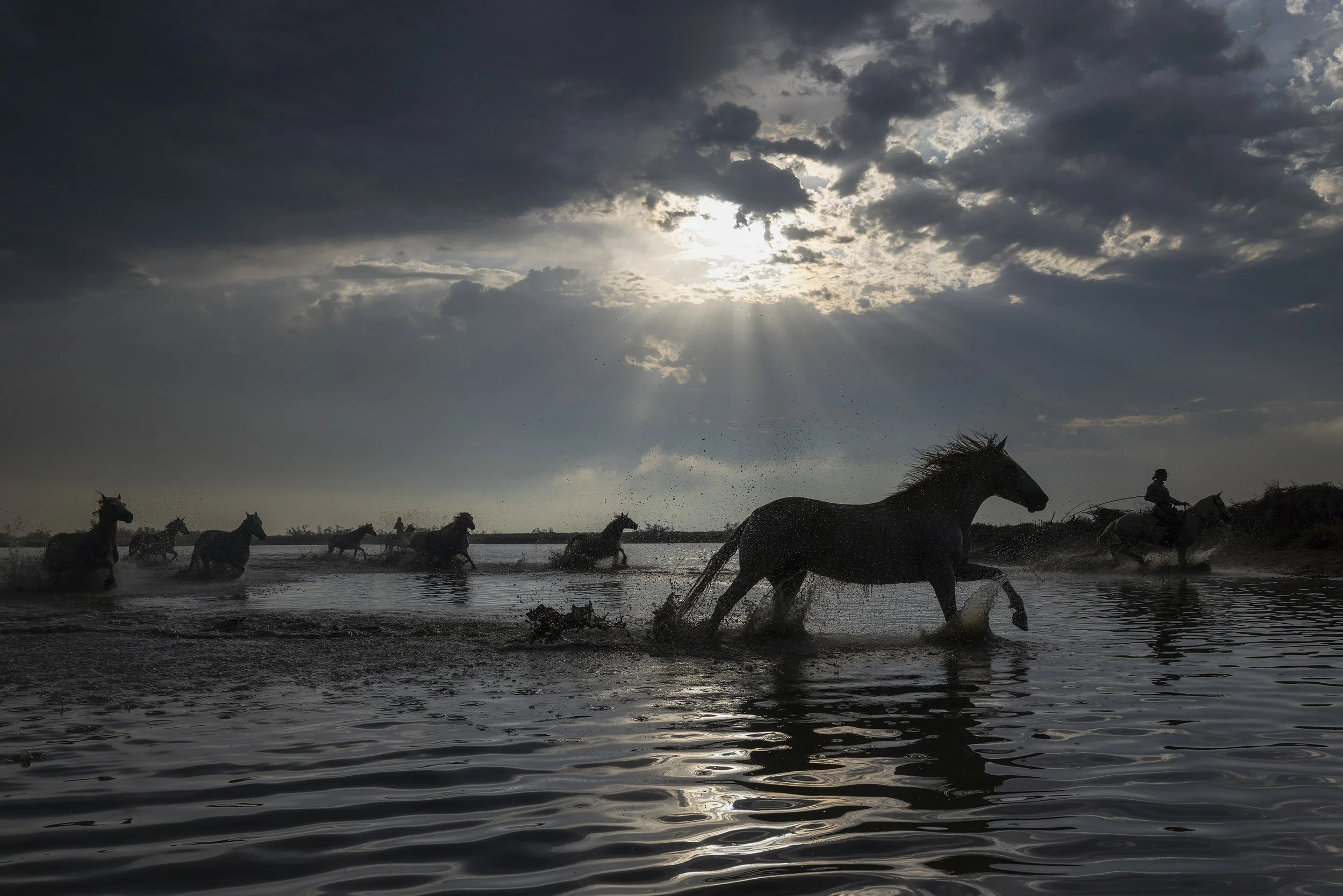Shoot More, Think Less: Better Travel Photography Without Overthinking Settings
Travel photography is about timing, storytelling, and connection—not obsessing over camera settings.
Yet, whether it’s in the temples of Bali, the markets of the South of France, the waterfalls of Iceland, or the streets of Vietnam, I see photographers fall into the same trap: overthinking their settings and missing the moment.
We stumbled into a wedding processional in Fontaine de Vaucluse. The bride's daughter ran from deep shade into bright sun—if I’d been fumbling with manual settings, I would’ve missed the shot.
This post is about breaking that cycle. I'll explain why I often use Shutter Priority Mode, Auto ISO, and Auto White Balance in travel photography, and how simplifying your camera settings can help you capture better images—by shooting more and thinking less.
The #1 mistake I see in travel photography
Whether you’re photographing a fisherman casting a net in Vietnam, locals placing offerings at the temples of Bali, or soft light hitting cobblestones in the South of France, the best moments happen fast.
But instead of shooting, many photographers freeze. They start adjusting ISO, fumbling with dials, second-guessing exposure or white balance… and the moment is gone.
I call it "overthinking and under-shooting."
Why I use shutter priority, Auto ISO, and auto white balance
Contrary to what you might hear online, you don’t have to shoot in full manual to make great images.
In fact, I rarely do—especially when I’m working in fast-changing light or dynamic situations.
Here’s my go-to setup for most travel scenarios:
Shutter Priority Mode (Tv or S):
I pick the shutter speed to control motion—whether I’m freezing action or adding intentional blur—and let the camera handle the aperture.Auto ISO:
This allows me to work in shifting light without constantly adjusting ISO manually. I set a max ISO limit to keep noise in check, but otherwise, I let the camera adjust automatically so I don’t miss the shot.Auto White Balance (AWB):
Unless I’m in very tricky lighting, I trust Auto White Balance. It keeps me fast and flexible, and I can always fine-tune color in post-processing if needed.
The benefits of simplifying your camera settings
Using Shutter Priority, Auto ISO, and Auto White Balance isn’t lazy—it’s smart. It lets you:
Stay focused on the moment, not the menus.
React quickly to changing light or subjects.
Shoot more and second-guess less.
But you still need to know your camera. Here’s how to make the most of this approach:
Understand how your camera meters light so you can use exposure compensation when needed.
Set a max ISO limit in Auto ISO to protect image quality.
Know when to override white balance—for example, in extreme lighting conditions like indoor LEDs or heavy color casts.
From the Camargue to Bali: Keep it simple, capture more
Whether it’s the thundering rush of white horses charging through the salt marshes and beaches of the Camargue, the pre-dawn bustle of Vietnam’s morning markets, or the quiet rituals of locals placing offerings at Balinese temples while incense smoke swirls in the air, the same lesson applies.
The light shifts. A subject moves into frame. The moment unfolds—brief, beautiful, and fleeting.
Some photographers are still adjusting ISO, changing white balance, or second-guessing exposure—and by the time they’re ready, the moment is gone.
Those who focused on the moment, rather than overthinking their settings, were the ones who captured the shot.
Final takeaway: Shoot more, think less
Photography is about seeing, not just setting.
If you spend all your time adjusting your camera, you’re not doing the one thing that really matters: clicking the shutter.
So the next time you head out—whether it’s in Bali, Iceland, Vietnam, or the South of France—simplify your setup.
Use Shutter Priority. Turn on Auto ISO. Trust Auto White Balance. Focus on light, composition, and emotion. Shoot first. Fine-tune later.
Join the conversation
What are your go-to camera settings for travel photography?
Do you simplify your setup, or do you tend to overthink it?
Leave a comment below—I’d love to hear your thoughts!
For more information on my photography workshops, feel free to reach out to me directly at jeff@swingmanphoto.com or visit my workshop page to explore upcoming adventures and dont forget to check out my affiliate page for you gear needs






